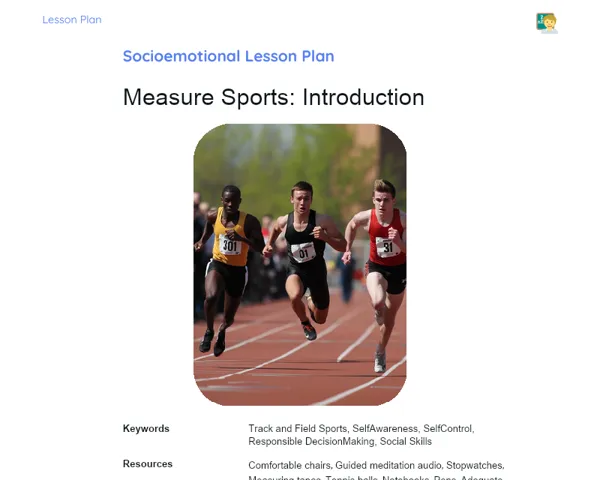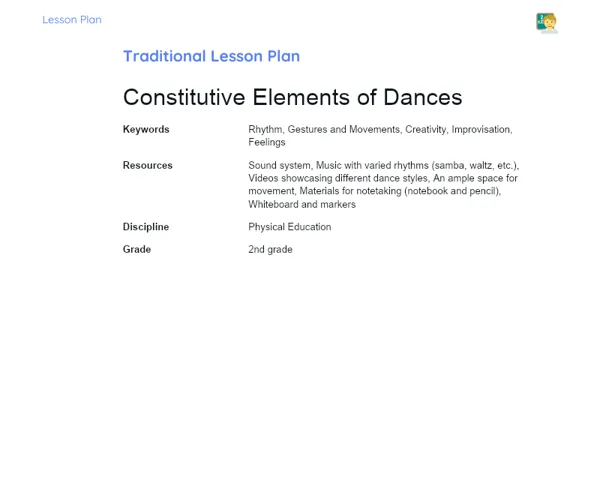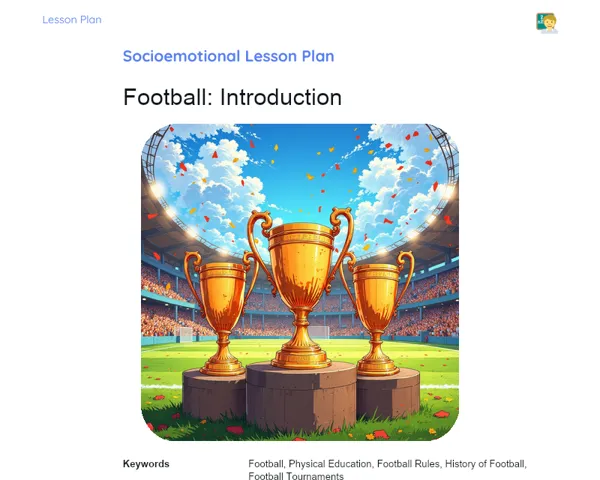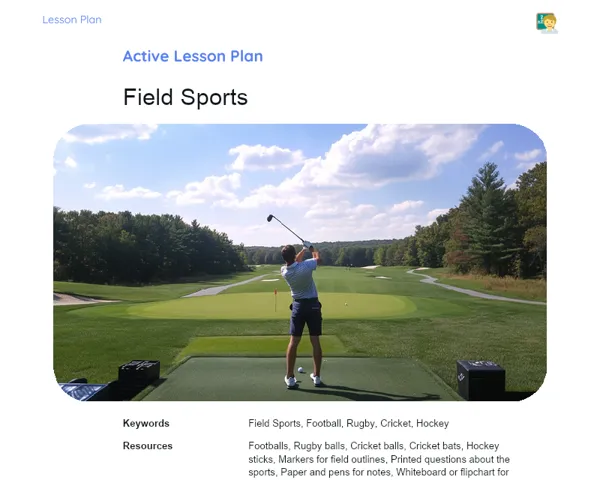Lesson Plan | Lesson Plan Tradisional | Volleyball
| Keywords | Volleyball Rules, Volleyball Characteristics, Player Positions, History of Volleyball, Major Championships, Types of Plays, Interesting Facts, Practical Examples, Discussion, Student Engagement |
| Resources | Whiteboard, Markers, Eraser, Projector or TV, Slides or digital presentation, Sheets of paper, Pens, Volleyballs, Volleyball net (if available), Volleyball court (if available) |
Objectives
Duration: (10 - 15 minutes)
The goal of this stage is to give a clear and comprehensive overview of what will be covered in the lesson. This ensures that students grasp the essential aspects of volleyball, from its rules and roles to its history and significance in the sports arena. This contextual understanding prepares students for more detailed and focused learning.
Objectives Utama:
1. Learn the fundamental and advanced rules of volleyball.
2. Identify the key roles and characteristics of players during a volleyball match.
3. Understand the origins of volleyball and the significance of major tournaments.
Introduction
Duration: (10 - 15 minutes)
This section aims to provide learners with a clear insight into the lessons ahead, ensuring they appreciate the key points of volleyball, including its rules, characteristics, history, and overall importance in sports.
Did you know?
Here's an interesting tidbit: volleyball was invented in 1895 in the USA by William G. Morgan as a less intense alternative to basketball. It became an Olympic sport in 1964, and Brazil boasts one of the highest medal counts in this sport. Moreover, playing volleyball can be a fantastic way for students to develop teamwork and coordination skills.
Contextualization
Kick off the lesson by placing volleyball in the context of a team sport that not only demands physical skills but also relies heavily on teamwork, strategy, and effective communication. Point out that volleyball is played across various levels, from casual pick-up games to the professional arena, and is among the most beloved sports globally. Highlight that Brazil stands out as a powerhouse in volleyball, excelling in both men’s and women’s competitions, with many Brazilian players gaining international acclaim.
Concepts
Duration: (50 - 60 minutes)
This stage focuses on delving into the critical aspects of volleyball, giving students a thorough understanding of its rules, positions, types of plays, and its historical and competitive importance. This knowledge will help students apply their learning in both practical and theoretical contexts.
Relevant Topics
1. History of Volleyball: Discuss that volleyball was invented in 1895 by William G. Morgan in the USA as a less vigorous alternative to basketball. Emphasize that it became an Olympic event in 1964 and that Brazil has a remarkable legacy in the sport.
2. Basic Rules of Volleyball: Explain the fundamental rules, which encompass court structure, team composition (six players per team), the main objective (to land the ball on the opponent's court), and principal infractions.
3. Player Positions: Break down the various player positions on the court (setter, libero, outside hitters, middle blockers, and opposite hitter) and what each player is responsible for. Clarify how the rotation operates during gameplay.
4. Types of Plays: Introduce the primary types of plays like serve (float and jump serve), reception, setting, attacking (spike and tip), blocking, and defensive maneuvers. Offer practical examples to illustrate each type.
5. Major Championships: Review key competitions such as the Volleyball Nations League, World Championship, Olympics, and Brazilian Superliga. Stress their significance in the global volleyball landscape.
6. Curiosities and Highlights: Share intriguing facts like records and prominent players, underscoring the impact of Brazilian athletes in international volleyball.
To Reinforce Learning
1. What are the key rules of volleyball and how do they influence the pace of a match?
2. Describe the positions of players within a volleyball team and their respective duties.
3. Discuss the significance of major volleyball championships and their global impact on the sport.
Feedback
Duration: (15 - 20 minutes)
This stage aims to consolidate the knowledge students have gained throughout the lesson, providing a platform for discussion and reflection on the topics covered. Engaging them in reflective questions will reinforce their understanding of volleyball's rules, roles, plays, and the relevance of championships.
Diskusi Concepts
1. What are the main rules of volleyball and how do they impact the flow of a match? 2. The primary rules of volleyball include court layout, team formation (six players per team), and the game's main goal, which is to land the ball on the opponent's court. Additionally, it's vital to adhere to rotation rules and avoid penalties like consecutive touches by the same player or entering the opponent's territory. These rules are essential for maintaining order and rhythm in the game, as well as ensuring fairness. 3. Describe the player positions on a volleyball team and the responsibilities of each. 4. Every player in volleyball has a specific role with distinct responsibilities. The setter is key for orchestrating plays and delivering precise sets, while the libero focuses on defense and reception, not participating in attacking plays. Outside hitters are multifunctional and contribute to both defense and attack. Middle blockers concentrate on blocking the opponents and executing quick attacks from the middle of the court. The opposite hitter usually serves as the primary attacker, receiving sets during tough scenarios. The rotation among these positions is essential for team strategy and dynamics. 5. Explain the importance of major volleyball championships and how they influence the sport globally. 6. Major championships like the Volleyball Nations League, World Championship, Olympics, and Brazilian Superliga are instrumental in promoting and advancing the sport. They provide a battleground for the world's top players and teams, enhancing the technical and tactical standards of volleyball. Furthermore, these events attract media and sponsorship attention, boosting visibility and funding for volleyball. Success in these tournaments also motivates upcoming generations of athletes and enriches the sports culture across different countries.
Engaging Students
1. What are the main differences between school-level volleyball and professional volleyball? 2. How does the libero position enhance a team’s defense? 3. What strategies should a team consider to enhance performance in major tournaments? 4. What are common infractions in volleyball and what steps can be taken to avoid them? 5. How do global tournaments contribute to the skill enhancement of players?
Conclusion
Duration: (10 - 15 minutes)
The conclusion aims to reinforce the central themes discussed during the lesson, ensuring students possess a cohesive and comprehensive understanding of the material. It also highlights the practical significance of volleyball, encouraging students to incorporate their learnings into real-life scenarios.
Summary
['History of Volleyball: Founded in 1895 by William G. Morgan and became an Olympic sport in 1964.', 'Basic Rules of Volleyball: Court structure, team composition, game objectives, and key infractions.', 'Player Positions: Setter, libero, outside hitters, middle blockers, and opposite hitter, including their roles and rotation.', 'Types of Plays: Serve (both float and jump), reception, setting, attacking (spike and tip), blocking, and defense.', 'Major Championships: Volleyball Nations League, World Championship, Olympics, and Brazilian Superliga.', 'Curiosities and Highlights: Global records, notable players, and the contribution of Brazilian athletes.']
Connection
The lesson successfully merged theory with practical application by detailing the rules, roles, and types of plays, which allowed students to see how theoretical concepts come alive in actual volleyball matches. Real-life examples and championship contexts further reinforced this connection.
Theme Relevance
Today's lesson is particularly relevant to students as volleyball is a widely practiced sport in various environments, including schools, clubs, and competitive settings. Beyond promoting physical fitness, volleyball fosters essential skills like teamwork, communication, and strategic thinking—qualities that are invaluable for personal and professional development.



